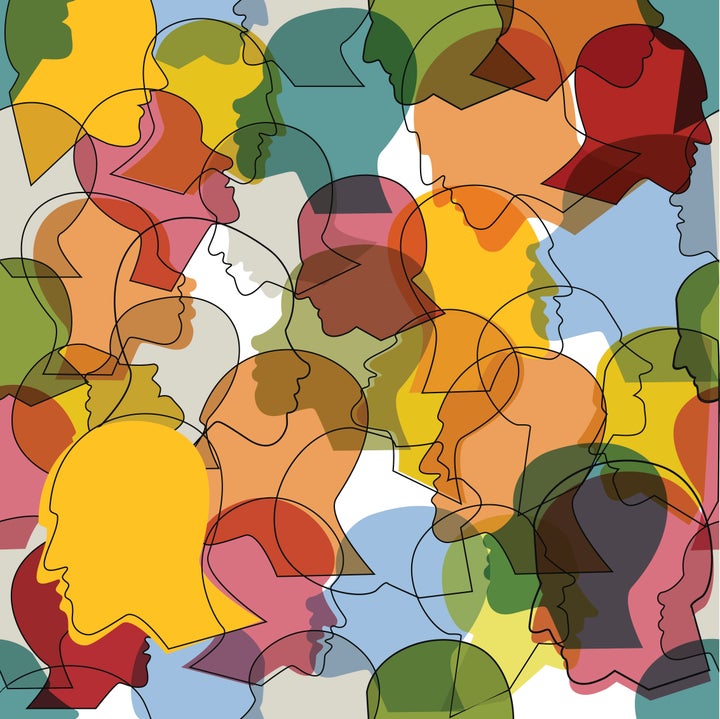
It’s been called a ‘silent epidemic’, but the mental health of men and boys is high on the public agenda.
I gave evidence last week to a parliamentary inquiry calling for urgent preventative action against male suicide rates. It is a harrowing statistic in the UK that more than three quarters of those who take their own lives are males.
The tragic fact is that not nearly as many men as women report depression or come forward to access mental health support.
One explanation for that, which is echoed to me by the psychotherapists at the UK Council for Psychotherapy, is the perception that NHS services are ‘feminised’, and can be quite off-putting for men.
When you call a GP surgery to make an appointment, you are often asked what ails you – a reasonable question for busy practices needing to prioritise patients by need.
But imagine you’re a man who is in despair following redundancy, bereavement or divorce and the receptionist’s voice on the other end of the line is female. Many would struggle to be forthcoming.
It’s compelling viewing when major male public figures such as Prince William and England manager Gareth Southgate along with footballers Danny Rose, Thierry Henry and Peter Crouch speak openly about their mental health and emotional pressures.
But, frankly, services are not sufficiently tailored to meet the needs of men who will be inspired to seek them after hearing these VIP testimonies.
There is significant evidence to suggest that symptoms of depression, anxiety and other forms of mental distress can manifest differently in men than in women, and that this is leading to the under-recognition of these problems in men.
For example, there’s much evidence to show that men, often taught to bottle up their feelings from childhood, are far more likely to ‘act out’ than verbalise their emotions. The figures for substance misuse, rough sleeping, and risk of committing or being the victim of violence are far higher among men.
I told the women and equalities select committee that men’s emotional wellbeing is a social issue, with complex root causes. To look at it solely as a disorder or illness is missing the point and will certainly alienate many men living with depression or anxiety.
Male suicide affects all ages and characteristics but especially middle-aged men. This is often simplistically attributed to ‘traditional’ masculine traits such as stubbornness and self-reliance. But there is a great deal more to it.
Middle age can often expose men to socio-economic hardship, unemployment and underemployment, relationship breakdown, and lack of social support, all of which are common risk factors for suicide. As well as that there’s a general ‘dip’ in health among people in their mid-years, compared with both younger and older people.
My organisation of some 10,000 members holds a huge repository of knowledge on what it means to be a man or boy navigating everyday challenges, like work, family, living in cities, education, crime and loneliness.
They tell me that men entering therapy will often ask “Is this normal?” because, unlike many women, they have not been taught or exposed to the emotional literacy that helps people to recognise when they are in distress.
I told the inquiry that the first and most urgent task is to not ‘lump’ all men into one single category or assume a one-size-fits-all approach will apply.
We need to look at the journey through the lens of a man in distress. What symbols, behaviours and systems will they encounter? Men come into therapy to share experiences and feelings they have never articulated to anyone, even to their closest loved ones.
It’s vital that prospective male patients feel themselves valued and reflected in the visuals and language associated with the service – which is difficult given the current gender balance of the mental health workforce.
We can learn much from numerous innovative examples of mental health services around the world that have successfully engaged with men such as Man-up Against Suicide (Canada), Beyond Blue (Australia), Menzone (Bradford, UK) and ManTherapy (Colorado).
What these services share is how they are talking to men differently, creating men-only spaces, creating new, atypical therapeutic approaches for men. Importantly, this helps men to feel acknowledged and that their feelings are valid.
The NHS and HEE must take proactive steps to encourage men (and other underrepresented groups) to work in mental health services and health services more generally. This requires serious will, and some investment. But with the NHS facing a raft of workforce challenges, recruiting more men will have benefits far beyond enhancing men’s interactions with services.
It’s vital that the Government, NHS, HEE and regulatory bodies take pro-active steps to fund and promote a consistent model of cultural competence training across the UK for mental health practitioners.
Of course addressing gender stereotypes goes far beyond the realm of health services, but there’s an opportunity here for us to be much more mindful of the way gender norms affect interaction with services.
Services like these won’t work for all men, but we do know that giving people choice over their treatment improves outcomes. If we can create a more representative and better trained workforce and provide a greater choice of treatments and treatment contexts, we will increase the chance of engaging men in mental health services. That stands to benefit us all.
Useful websites and helplines:
- Mind, open Monday to Friday, 9am-6pm on 0300 123 3393
- Samaritans offers a listening service which is open 24 hours a day, on 116 123 (UK and ROI - this number is FREE to call and will not appear on your phone bill.)
- The Mix is a free support service for people under 25. Call 0808 808 4994 or email: help@themix.org.uk
- Rethink Mental Illness offers practical help through its advice line which can be reached on 0300 5000 927 (open Monday to Friday 10am-4pm). More info can be found on www.rethink.org.